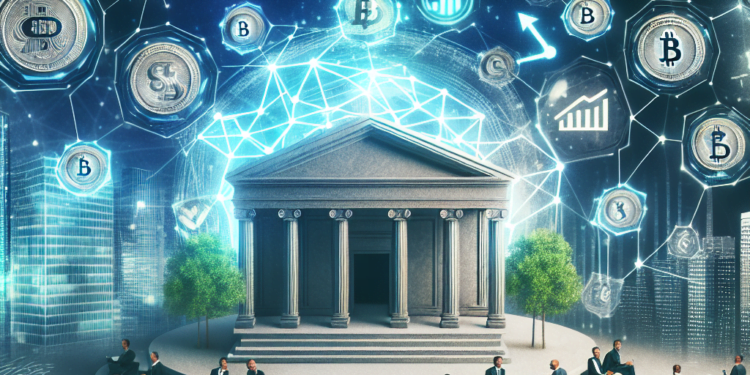The financial world as we know it is undergoing seismic shifts, digitizing and decentralizing at a breakneck pace. Our traditional financial systems are struggling to keep up. But fear not! A new hero has risen through the ranks of the innovators and disruptors, determined to provide a system that is open, inclusive, and democratic. It’s called Decentralized Finance, or “DeFi” for short. A buzzword in fintech, DeFi has shown its potential to revolutionize our lagging financial systems and infrastructures. But what exactly is DeFi? And how is it changing the financial landscape? Let’s dive into it.
Decoding DeFi: What is Decentralized Finance?
Decentralized Finance is a modern financial system built on public blockchains (mainly Ethereum), separate from the centralized banking system. It aims to democratize finance by removing intermediaries and allowing anyone, irrespective of their geographical location or financial status, to partake in various financial activities. It includes but not limited to lending, borrowing, trading, risk management, and insurance.
The Power of Decentralization: How is DeFi Changing the Game?
DeFi, with its core principle of decentralization, is contesting the traditional financial system and transforming paradigms in several notable ways:
Open to all
Unlike traditional banking, DeFi’s financial services are open to anyone with an internet connection. There’s no need for credit history, employment verification, or minimum balance. All that’s needed is a digital wallet.
Transparency and Security
With all transactions visible on the blockchain, DeFi ensures total transparency. Due to its decentralized nature, it is not susceptible to a central point of failure, increasing overall security.
Potential for High Returns
DeFi platforms often offer higher interest rates than traditional banks on deposits and savings, enabling users to earn substantial returns on their investments.
Real World Implementations: DeFi in Action
Several projects are exemplifying DeFi’s transformative potential. Platforms like MakerDAO, Uniswap, Compound, and Aave offer a plethora of services from stablecoins to lending and borrowing services, to decentralized exchanges. These projects are breaking barriers and proving that a decentralized financial infrastructure is not just a theoretical concept, but a practical solution to many of the issues plaguing our current financial system.
For your daily dose of such revolutionary stories, visit DeFi Daily News.
The Road Ahead: Challenges and Possibilities
While the horizon of DeFi is promising, it’s not without challenges. The current regulatory landscape is not fully prepared to handle this paradigm shift. Moreover, as the technology is still in its early stages, volatility and security incidents are recurring risks.
Nonetheless, the potential for DeFi to fundamentally change our traditional banking systems cannot be overstated. Its model of decentralization, transparency, and equality shows the possibility of a financial system that serves everyone, regardless of socioeconomic background or geographic location. If appropriately managed and evolved, DeFi has the potential to level the financial playing field, creating a more inclusive and resilient economy.
Conclusion
Decentralized finance is undoubtedly revolutionizing traditional financial systems by democratizing access to services, enhancing transparency, and potentially offering high returns. While its nascent state brings inherent risk and regulatory challenges, the transformative potential of DeFi cannot be denied. As the technology matures and regulatory frameworks adapt, DeFi may well herald a new era of truly inclusive and efficient financial systems.
Frequently Asked Questions
What is DeFi?
DeFi or Decentralized Finance is a novel financial system built on public blockchains (mainly Ethereum). It aims to democratize finance by eliminating intermediaries and providing access to financial services to everyone with an internet connection.
How is DeFi different from traditional finance?
Unlike traditional finance, DeFi is open to all, ensures total transparency, and offers potential for high returns. It decentralizes the control of financial services, thereby reducing the vulnerability of a central point of failure.
What are some DeFi applications?
DeFi applications include decentralized exchanges like Uniswap, lending, and borrowing platforms like Compound, and stablecoin systems like MakerDAO.
What are the challenges facing DeFi?
While DeFi holds transformative potential, it also grapples with challenges such as regulatory ambiguity, technology maturity, market volatility, and security risks.



















